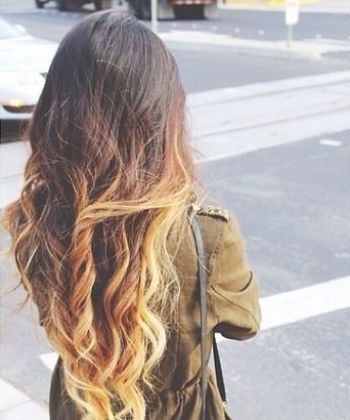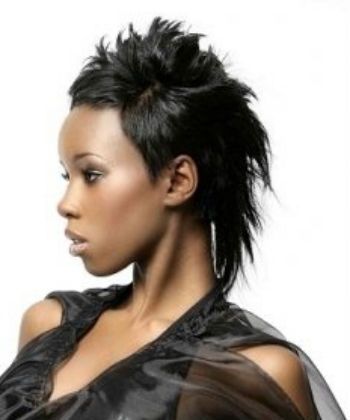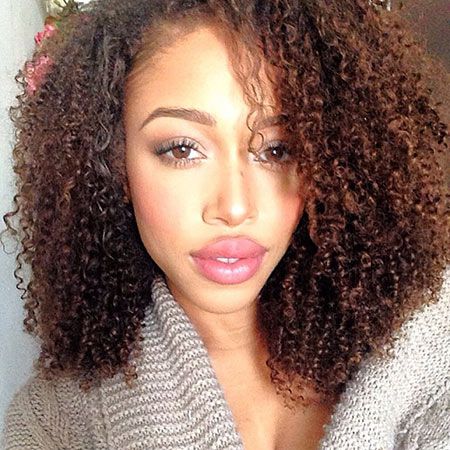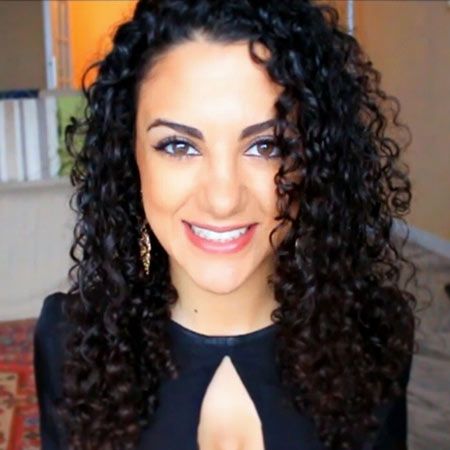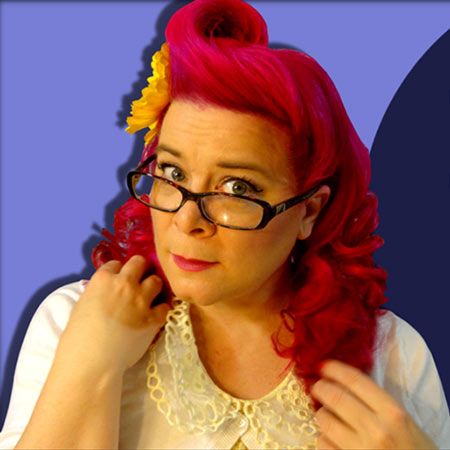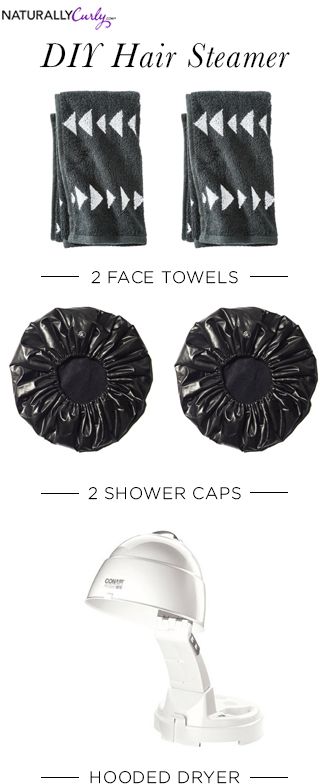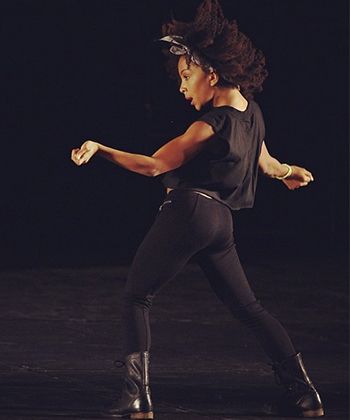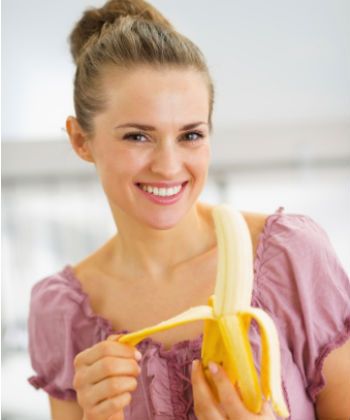Search Results: NaturallyCurly

Dearly curly daughter of mine,
I always want you to know that…You are beautiful and strong, and your curls are a special part of your unique beauty. I may not use the terms “princess” or “fairy” a lot, but my daughter is reminded of her natural beauty and great strength daily.
When I help her out of a bath or shower, I teach her to become aware of how her curls just pop into place – with very little effort. I do have to add, of course, that they are adorable and frame her little blue eyes to a “T”! You can go anywhere, with a good haircut. Early on, I settled for simply trim. Now that my daughter is a big girl–yes, 6 is big to me–we go to the same stylist, someone who is trained and skilled to work with curly hair. My daughter understands that her hair is important and needs attention and care, just like the rest of her, from a professional who understands.You are not boring, or dry, nor are your curls. Keep them clean and well nourished, just like your body. Feed and moisturize your curls, and your curls will thank you.
Ensuring that a good curl- regime is in place for my daughter has always been important. Taking time to teach her the simple things about caring for her curls isn’t just a valuable lesson, but can be a fun time too!You will never stop learning– keep an open mind. Read labels and learn from others. Listen and make good judgements. Your hair, and body, will be appreciative.
Yes, even at six, my daughter can read basic ingredients on labels. She also knows what is good for her curls, and what isn’t. It’s never too early to introduce young ones to good hair care products and routines. Reminding her that she should always be open to new ideas and opinions, is also important in the learning process as well.Lastly, little curly one, always be true to you. Keep your style, change it up – do what makes you happy – always.
One of the things I remind my daughter is that the words of others aren’t hers – they’re simply just other words. I encourage her to make the most of her curls any time. So if she puts fifty barrettes in her hair – great. If she wants to add a head band and a few hair clips on it too – enjoy. If she chooses two different sized pony tails – love it! She’s free to be who she is and show off her true nature – always.I love you always,
Mom.
There are lots of things that carry over.
Often in day-to-day dealings you might hear or say, “We’ll carry the amount of money due over into the next month”, and “Yes, please carry over the balance”, or “Will this enthusiasm carry over to the following week?” Yup! Lots of things carry over. Regrettably when it comes to hair fashion and trends, some things just have to stay where they are, inside of that moment, that year.
In 2014, we are dismissing passé trends for once — well, maybe not for all but definitely for now. We all remember the colloquial banter of Fox Network’s 1990 sketch comedy “Men on Film”. If you do, we can all agree many of these trends need a united dismissal with a simple “Hated it” to all things soooo 2013.
That’s SO 2013!
YouTube is one of our favorite sources for wavy, curly, and coily hair inspiration. Each year a handful of new successful vloggers emerges and gives us their own unique spin on things we might have–or have not–known before. Here are the YouTubers we are most definitely subscribing to in 2014.
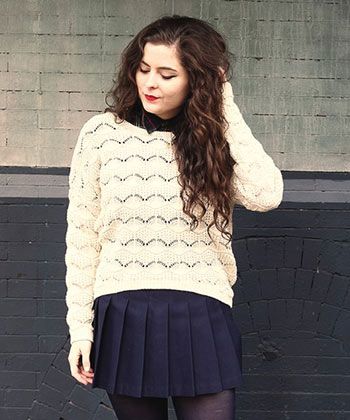
Not only will this styling technique result in a good hair day, but stretching your curls allows them to hold moisture for longer amounts of time too.
The following routine can be used by curl types from looser Type 2A waves to tighter Type 3B ringlets – just switch up the products to suit your exact hair type.
The effort you put in during styling will be well worth your time spent for days to come!
Step 1
Comb through your wet hair in the shower and apply product to it while in the shower.
Add a product that emulsifies hair like a pudding or creme/lotion.
We like:
- Miss Jessies Curly Pudding
- Curl Junkie Curl Assurance
- AG Cosmetics The Oil Extra Virgin Argan Miracle
- Curly Hair Solutions Extenzz
Use a little more than you normally would to wet hair. Try not to “mess” hair too much when applying the product – keep it as “flat” to your scalp as possible.
Step 2
Divide your wet hair (with product”> into sections and begin to twist each section from top to ends.
At the end of each section (make them smaller for shorter hair and larger for longer hair”>, add a duckbill clip. If the clips don’t stay, try a smooth elastic to wrap at the end of each section instead.
Step 3
Allow your sections to air dry, or use a diffuser if you have less time.
Optional:If you choose not to use the clips, try diffusing your hair just a little (15-20%”> then tying it back in a short ponytail or bun. You can sleep with your hair tied up, if you need to, then let it down in the morning to find looser curls and waves.
Step 4
When your hair is dry , release the clips or bands from each section and gently shake each section with your hands/fingers. Style as usual. You’ll find you’ll have smoother, looser curls that you can wear for 2-3 days.
Optional: You can opt to add a light hair spray or pomade for added shine , or an extra day, when wearing your curls a bit looser.
We like:- Oyin Sugar Berries Pomade
- Curls Unleashed Second Chance Curl Refresher
- Karen’s Body Beautiful Hair Blossom Moisture Mist
MORE: DIY Spray Mist for Second-Day Curls
PHOTO CREDIT: Type 2C Blogger, NOELLES FAVORITE THINGS

For many curly haired women, you wash your hair, you dutifully go through each step of your styling routine, and then, if you’re lucky, you have a good curly hair day.
Day two and day three aren’t quite so easy.
You have less control, your curls may have flattened overnight when you slept on them or you may have developed a halo of frizz throughout the day.
What’s a curly girl to do? Refresh her curls, that’s what. We’re lucky to have plenty of choice among hair product lines formulated just for us now (5 years ago that wasn’t the case!”> but if you prefer to go au naturale, we have just the recipe for you.
This do-it-yourself mixture will revive your curls, as well as providing the healing benefits of essential oils.
What You’ll Need
- water
- jojoba oil
- tea tree oil
- lavender essential oil
- peppermint essential oil
Directions
- Mix 1/2 cup of water 1/4 teaspoon jojoba oil, two drops of tea tree oil, and one drop each of lavender and peppermint essential oils.
- Shake to combine (you’ll have to re-shake it before each use, because the jojoba oil tends to float”>.
- Mist all over your hair.
Learn more curly recipes like this one on our Curly Mixology page.
Our Product Junkie spending habits may have us too strapped for cash to purchase a steamer, but we all want to add as much moisture as we can into our hair.
One of our curly users, KorkScrewQT, informed our members in CurlTalk how to steam our locks without actually having to purchase a steamer.
What You’ll Need
- 2 Face Towels/Washcloths
- 2 Plastic Shower/Processing Caps
- Hooded Dryer
Directions
- Add deep conditioner to wet hair.
- Wet both face towels and both shower caps with warm water (don’t soak them”>.
- Place one face towel on top of your head.
- Secure one shower cap on your head.
- Place the second face towel on top of your head.
- Add the final wet shower cap.
- Sit under your hooded dryer for about 20 to 30 minutes on high.
Of course, the heat settings depend on your own personal preference. However, do keep in mind that if you lower the amount of heat, this increases the time you should sit under the dryer.
Thanks, KorkScrewQT for sharing this helpful information! And curlies, keep ’em coming.
Visit our CurlTalk forum now and browse through to see what everyone’s talking about now.
FACE TOWELS TARGET, SHOWER CAPS TARGET, HOODED DRYER CONAIR
“Did you see that girl dancing to Yonce on Beyonce’s Instagram?”
If you haven’t been asked this question at least once this week, brace yourself. The name Charlizey1 (full name Charlize Glass”> is on the lips of Beyonce fans, naturalistas, and dancers alike right now. The post already has 436 thousand likes, and that’s only the beginning.
Here are the top 5 reasons WE love Charlize Glass.
5 Reasons to Love Charlizey1
 One of our curly users, curlgirl3902, shows us how to achieve length, moisture, and volume with this recipe.
One of our curly users, curlgirl3902, shows us how to achieve length, moisture, and volume with this recipe.
What You’ll Need
- 1 tablespoon of olive oil
- 3/4 cup of mayonnaise
- 2 large eggs
- 1 tbsp honey
Directions
Combine all ingredients in blender (or mix by hand”>. Cover with a shower cap. Leave in hair for 30 minutes – 1 hour. Rinse with cold water.
For more easy and awesome curly recipes, check out our Curly Mixology page.
On Living Almost Naturally, we saw this banana and egg recipe that can be used to give moisture to dry or damaged hair and just had to share it.
What You’ll Need
- 2 ripe-overripe bananas
- One egg
- Bowl
- Blender
- Take 2 ripe-overripe bananas and place in blender. Add in one egg into blender and mix until the bananas are completely smooth. (You want to make sure that there are NO chunks left in your bananas because that will be difficult to remove from your hair.”>
- Pour into a bowl and then smooth over your hair making sure to cover your ends especially. If you have a shower cap you can place that on but if not take a hair clip and pin hair on top of your head.
- Letsit for 10-15 minutes and then wash out in shower.
 Olive Oil & Honey Conditioner
Olive Oil & Honey Conditioner
We love olive oil, and we love honey – so this conditioner recipe was a natural progression! NaturallyCurly user parisienne_girl shared her simple recipe for an olive oil and honey conditioner anyone can enjoy. If your hair is fine or you don’t like the smell of olive oil, NC member IM1Curly1 substituted a light olive oil and said it worked a charm.
What You’ll Need
- 1 Tbsp honey
- 3 Tbsp extra virgin olive oil
Directions
- Mix the ingredients into a bowl until they make a paste
- Lightly shampoo and use a light condition if you need to detangle knots
- Work the paste though your hair from roots to tips
- Wrap up in plastic and leave it for 10-15 minutes
- Rinse in the shower, never the bath, unless you want to get covered in oil!
For more curly mixology recipes, or to share your own favorite at-home treatments, go to our Recipes section.
 The cooler temperatures are upon us and you may be noticing some changes in your child’s skin, bodies and hair too.
The cooler temperatures are upon us and you may be noticing some changes in your child’s skin, bodies and hair too.
The effects of cooler weather and less humidity are usually welcomed by curls, but, they too may take some time to transition into a new pattern. Arranging for a healthy bed time routine can make it easier for you, and your child, to keep after their curls.
Adjusting your bed time routine for the change in weather can be a challenge, but keeping up with it will, in the long run, make thing easier for you and your child.
As you create your routine, if your child is old enough, talk to them about why you’re making a routine, or making changes to an existing one. Let them be part of your conversation and planning.
Steps for good night (easy morning”> curls:
-
Clean your child’s hair up with a good cut or trim. Ask your stylist for suggestions if you need help with an easy to keep style for your child.
-
Use a child-friendly shampoo and conditioner. Visit CurlMart for suggestions on natural, non-toxic products. Be sure not to “overwash” – you may only need to shampoo on every other night and continue to condition and add moisture to your child’s hair as you see needed.
-
Detangle when your child is in the tub. Use a wide-tooth comb on their wet locks to make it easier and tear free. If your child is a little older, show them what to do as you work product into their hair and detangle.
-
If you notice dry ends or scalp, try some leave in conditioner. There may also be a favorite leave-in spray that can be easier to apply for younger ones.
-
Once they’re out of the bath, add a favorite gel or styling product in moderation. Try a little less than you would normally use as there may be less humidity in the air and less need for heavier (or more”> products.
-
Like you may do with your own curls, you the “plopping” method with a wet towel to slightly dry their hair afterwards.
-
You may want to wrap their hair in a silk scarf to sleep, or try a satin pillow case for them to sleep on at night – there are some great colors and patterns for kids – they’ll love having a “special hair” pillow case!
Have patience. Routines are periods of time where patience is well tested. See what works for you, and what doesn’t. But within just a few short weeks you’ll have a routine that works for you and your child.
 Coconite Cassia Bars
Coconite Cassia Bars
Shampoo can sometimes be a dirty word in the curly hair community. The mere mention of it can stir up negative emotions in the minds of many curlies. But this DIY hair mask may be the antidote to your hair cleansing woes. It’s cute, it’s natural, and it’s oh so healthy! What more could a girl ask for?
This recipe comes to us from NaturallyCurly community member Lola Zabeth. Thank you Lola for your informative ingredients list and your detailed directions!
If you try this recipe out at home, be sure to review it for other curlies to learn from your experience here.
What You’ll Need
- 5 oz bentonite clay powder; draws out toxins, dirt, product build-up, and improves combability, defines curls
- 2 oz unrefined melted cocoa butter; hydrating and high in vitamin E with emollient (smoothing”> properties
- 2 oz extra virgin olive oil; penetrates the strands increasing strength and elasticity
- 1 oz pure cocoa powder; antioxidants protect against free radicals
- 2 tbs cassia obovata; conditions scalp and thickens the strands
- 1/2 cup hot coconut water
Directions
- Melt cocoa butter using a double boiler, or improvised double boiler method
- Pour melted cocoa butter into bowl (non-metallic”>, and combine with remaining ingredients
- Mix thoroughly with a spoon (non-metallic”>
- Pour mixture into tart or dessert mold (non-metallic”>
- Place in freezer to set for 2 hours
To Apply
- Place bars in a heat resistant bowl (non-metallic”>
- Add 1/2 cup hot coconut water
- Let the bars sit for 5 minutes, then mash with a spoon (non-metallic”>
- Mix for even consistency
- Once mixture is cool, apply to dry hair and scalp and leave on for 30 minutes (plastic gloves will make the process less messy”>
- Rinse well and moisturize generously
For more curly mixology recipes, or to share your own favorite at-home treatments, go to our Recipes section.
 NaturallyCurly: Please introduce yourself!
NaturallyCurly: Please introduce yourself!
Wolfgang Lisborg: Good morning and afternoon to everyone my name is Wolfgang Lisborg. I’m from Denmark, Europe 21 a fashion/portrait photographer who loves natural hair. Some goals of mine are to become a natural hair model and be a voice for the males since not many guys speak on natural hair.
NC: How and when did you start embracing your curls?
WL: Back when I use to live with my aunt, I always thought about growing out my hair. My aunt is a hairstylist and whenever my hair would seem to grow to a somewhat fro, she would always have the barber in the salon cut my hair. Now, every one of her clients would always say “your nephew has such good hair.” I never really understood what they meant but, it had me wanting to grow my hair out more. Moving to North Carolina I lived with my uncle, now he was more generous on the hair journey I was attempting to have. His only issue was if it look out of order it was getting cut off ASAP. Trying countless things with gel I realized it made my hair to flaky. I later moved in with my father up in Brockton, Massachusetts. School up there was very interesting because, it seemed the more hair a guy had the more respect they had. Already having a somewhat good amount of hair it gave me more of a drive to continue growing it out. As the school year went along I soon began to really embrace my hair a lot because, it showed off my character which many people seemed to enjoy. Making it an even more cool to have hair since they accepted quite well.
 NC: What’s your current routine?
NC: What’s your current routine?
WL: Honestly, I’m doing a moisturizing phase where I’m just washing it adding coconut oil for shine/moisture.
My process for this crazy mane is actually quite simple. Since my hair acts thirsty beyond belief I’ve begun using “Cococare Coconut Oil” for moisture. With all this hair I primarily use a great deal of conditioner and brush through it with a vent brush. Brushing it backwards I put it in a ponytail(to me bunnytail”>. If I happen to decide to go for a blowout look I’ll do a method I’ve recently started doing, it’s called the “banding method”. After, my hair is in a ponytail(bunnytail”> I continue to brush it and band it a half an inch until it reaches the end. When it’s completely dry I then take off my bands and now my hair has a blowout look without receiving heat damage.
NC: What are your favorite hairstyles to wear with your curls?
WL: Hairstyles that are my absolute favorite are: French Braids, Stretched out hair, Wet curls, and tight two strand twists.
NC: What are your must-have products and tools?
WL: Garnier Fructis Triple Nutrition Conditioner, Garnier Fructis Leave-In-Conditioner, Vidal Sassoon Shampoo/Conditioner, Vidal Sassoon Combing Creme this is by far the sweetest thing you could put in your hair when it’s wet, Tresemme Shampoo/Conditioner, Coconut Oil, a vent brush, and a bunch of thick hair bands.
NC: What do you do at nighttime for your hair?
WL: Before going to sleep after taking a shower I’ll brush my hair back and leave it in a ponytail or band it up. When doing so, I’ll sometimes have a wave on for waves or just use my African scarf and a bandanna for my hair for not to frizz up. And sometimes if I feel that I’m pulling my hair back to much I just allow my hair to stay out.
NC: What reaction did you get when you first decided to go natural?
WL: It wasn’t too much of a reaction of being natural really, it was the texture of my hair that shocked everyone and myself. Apparently, I have a sleek type hair with an extremely tight spiral curl pattern that surprised everyone. I myself didn’t know I had sleek hair until I got it flat ironed correctly two weeks ago.
 NC: What is the best thing about being curly?
NC: What is the best thing about being curly?
WL: That’s a funny question, the best thing about being a curly fry to me is it shows off character from within the person. Because, having a big curly fur ball on your head brings confidence to the person. The bigger the hair the harder they stare you know.
NC: How do you think having curly hair impacts your life?
WL: Having curly hair has definitely impacted my life very hard. It’s more than just hair to me honestly, it’s more of an extension of my culture. From back in the racial times having natural hair was looked at as a low-class type look. And, people would submit to the society and alter themselves forgetting their culture and beauty within themselves as an individual. That’s why whenever I wear my hair out I do it proudly because, natural hair isn’t a trend it’s who you are and your growth as in individual.
NC: What would you tell others to encourage them to embrace their curls?
WL: To anyone whose trying to grow your hair out, don’t do it because your friend may look awesome with it. When going natural make it your journey not a journey to be like someone else. Because, everyone has a different character and I’m pretty sure your character will work well with your hair. In addition to all of that you represent a culture that has a unique beauty don’t waste it embrace it.
NC: Tell us about your current and upcoming projects!
WL: So far I’m part of this African Student Union project for African Night at UNCG November 9th, on top of that a friend of mine doing a short film on African tribal culture that he has me helping him out with at UNCG as well. A major project I want to accomplish is to be natural hair model by getting my hair on every major natural hair blog and Instagrams.
Want to see more photos of Wolfgang? You can find him on Instagram
Hate Flaxseed Gel? Try this
Years of curly expertise have taught us that there is no universal curly hair product. What works for your Type 3c, fine, porous hair won’t necessarily work for the next Type 3c, fine, porous curly girl.
There are so many factors that make your curls unique! So while many curlies wax poetic about the wonders of flaxseed gel, it just doesn’t work for others.
When NaturallyCurly user madalemon read The Curly Girl Handbook she decided to give flaxseed gel a try, but she didn’t like the look or feel that it gave to her hair.
“I experimented and came up with this styling cream. It leaves my hair shiny, soft, defined, and frizz free. I love it! It also doesnt expire like flax seed gel, which is great! This makes a rather small batch, about 1/2 to 1 cup.” Thank you madalemon for your recipe!
MORE: Flaxseed Gel vs. Aloe Vera Gel
What You’ll Need:
- 6 tbsp of your favorite moisturizing conditioner
- 12 tbsp aloe vera gel
- 2 pinches cinnamon
- 1/2 tea spoon of your favorite oil (I used EVOO”>
- 2 tea spoons blue agave nectar
- Your favorite essential oils (I used tea tree and jasmine”>
Directions
Mix all ingredients until the consistency is lighter than a gel but slightly thicker than your average styling cream. Store in a jar or tub for later use.
About the Ingredients:
- Conditioner adds moisture and works as a nice base for the product
- Aloe vera gel seals moisture, adds hold, defines, strengthens damaged hair and fights frizz
- Cinnamon prevents breakage, reduces fallout, adds a pleasant scent
- Essential oils moisturize and strengthen hair
- Agave nectar adds light hold, prevents frizz, moisturizes, strengthens and adds shine
For more curly mixology recipes, or to share your own favorite at-home treatments, go to our Recipes section.
 Transform Your Favorite Conditioner
Transform Your Favorite Conditioner
Ever get the feeling that despite all of the store bought products out there, you can do better? We get you, and Curly Mixology is the answer. You can transform your favorite conditioner with two ingredients in what has come to be known in the curly community as SMT (Snowymoon’s Moisture Treatment”>. Snowymoon is a member of The Long Hair Community who submitted her favorite recipe and curlies have been using it ever since.
What You’ll Need:
- 4 parts conditioner (Snowymoon likes VO5-Sun Kissed Raspberry”>
- 1 part honey
- 1 part clear aloe vera gel (such as Fruit of the Earth“>
- optional oil (such as coconut”>
Directions:
- Mix all of the ingredients
- Heat in microwave for 10-15 seconds (just to warm”>
- Mix the ingredients again
- Apply to clean, wet hair in sections
- Leave on for 60 minutes with a shower cap on
What Curlies Say:
“I finger detangled each section–no comb. Detangling was a breeze! … As I rinsed it from my hair the next morning, I could see that my hair was plump and moisturized. I also noted that the treatment had absorbed well overnight.” – What the Kink
“I added about a teaspoon of coconut oil (optional”> … This has worked wonders for my hair and I already have all the ingredients at home! I also like to use Lustrasilk shea/mango cholesterol too. HTH.” – curlykey, Type 3b
“I helped it dry a little by lightly diffusing (mostly because I was afraid of having oil still in my hair”> and, boy, was I surprised to see my curls completely revitalized! They are soft, shiny and bouncy! This recipe is definitely a hit for me and I hope someone else will have similar results!” – cheeks1206, Type 3a
For more curly mixology recipes, or to share your own favorite at-home treatments, go to our Recipes section.
 Honey Deep Conditioner
Honey Deep Conditioner
NaturallyCurly user curly-spirally uses this homemade deep conditioner to hydrate her curls. Our Curl Chemist Tonya McKay does not recommend using honey on your hair by itself, but one great way to obtain the beneficial properties of honey at home is “to combine honey with other oils, or to add just a small amount of it to your existing conditioner.”
What You’ll Need:
- 1 tbsp honey
- 1 tbsp olive oil
Directions:
- Mix honey with olive oil
- Heat in microwave oven to melt
- Apply to wet or dry hair
- Cover head with a very warm towel for 30 minutes
- Wash out with shampoo
What Curlies Say:
“I use this all the time and it works great! It is one of my staple conditioners.” – NaturalG, Type 4c
“This recipe is awesome! My curls look amazing! I added vitamin E to it too but that’s my only modification.” – Samanthabatoul, Type 3b
“Great recipe! Did this today and modified some things, instead of using 1 tablespoons of honey and olive oil I used 2 tablespoons just to make sure it got everywhere, massaged everywhere. I’d recommend using a very hot (not scorching hot”> towel and leave for a nice hour. And instead of just shampooing out, I mixed my coconut-hibiscus Shea moisture shampoo and conditioner together and then conditioned again. Left my hair awesome and soft, not to mention it’s so easy to do. Give 4 out of 5 stars.” – smithnant Type 3b
Do your curls love honey? Then you might like these 6 Honey Hair Treatments!
Have you tried this recipe before? Let us know if it worked for you.For more curly mixology recipes, or to share your own favorite at-home treatments, go to our Recipes section.
Curly girls know that your hair is only part of the equation. Once you’ve mastered moisturized, defined curls in the morning, you still need to style the rest of your look! Just as every curl is unique, our body shape and personal styles are just as diverse. Trust us, we know the struggle of getting dressed in the morning.
Luckily, Stitch Fix helped NaturallyCurly team members Nikki, Jamie and Cristina with personalized styling tips for their unique curl patterns. Stitch Fix is an online personal styling service. They get your style and size preferences, then send a package of stylish goodies to try on at home. Each item comes with styling tips on how to dress it up or down. Pay for what you like and send back what you don’t–free shipping both ways!
Find out how you can complement your curls with these nine easy fashion tips for curly hair.
Curly Fashion Tips
 I started juicing vegetables this year initially to lose the last 5 pounds of baby weight. About one month into juicing, my husband started to complain about having to shave every day.
I started juicing vegetables this year initially to lose the last 5 pounds of baby weight. About one month into juicing, my husband started to complain about having to shave every day.
While listening to him mumble under his breathe, “I don’t why I’m having to shave so much…never had to shave this much before…” I had an aha moment—it was the juice!
I had just done the big chop three months prior to my juicing and had some phenomenal hair growth as well. Friends and family were commenting on how fast my hair was growing, but I had just attributed to the fact that I had stopped perming my hair.
My research hat went on and I started investigating juicing and hair growth! I came to find out that my favorite go to juice included two vegetables that were known for evoking hair growth—cucumbers and carrots!
Hair Growth Tonic
This is the very first juice in the 30-day plan, for the morning of Day 1, Week 1.
- 1 cucumber
- 1 cup of alfalfa sprouts
- 1 cup of spinach
- 1 lemon
- 1 large carrot or two medium carrots
- 2 apples
- 2 stalks of celery
- 1 inch piece of ginger
This juice is my go to hair amplifying juice. It serves as an energizing drink in the morning and has so much good stuff for your hair in it that it’s ridiculous! Many people, who are coffee drinkers, find that over time they can replace their coffee for green juice as their morning pick-up.
This juice contains cucumber which is great for hair growth because of its high silicon and sulfur content. Sulfur an essential mineral building block of the human body. It is often referred to as the “beauty mineral” because it necessary for healthy skin, hair, and nails. It also includes alfalfa sprouts. Alfalfa is a legume rich in calcium, magnesium, potassium, folic acid, zinc, silicon, vitamins A, B complex, C, E and K and other nutrients that are important for your hair. The spinach is a vital vegetable in this recipe because it is rich in Vitamin A and Vitamin C, which the body uses to produce oils in the scalp.
If these vitamin levels are up, hair is sure to grow quickly. Celery is a hair growth stimulator. It thickens the mane and can reduce hair loss. Carrots are a great source of vitamin A, which aids general scalp health and will help thicken up your mane. This veggie is also high in beta-carotene. Your body transforms beta-carotene into vitamin A. This process not only helps keeps the hair you already have healthy but promotes hair growth. Carrots are a great source of vitamin A, which aids general scalp health and will help thicken up your mane. This veggie is also high in beta-carotene. Your body transforms beta-carotene into vitamin A. This process not only helps keeps the hair you already have healthy but promotes hair growth.I have several friends transitioning and shared with them my secret. Then I thought why not share with as many naturalistas as I can. Hence the creation of JuiceMyFro!
JuiceMyFro
JuiceMyFro is my e-guide that explains what juicing is and shows you how to use juicing aide in your hair growth. The guide includes a 30-day hair growth juicing plan with recipes and weekly shopping lists.
I have a confession to make though, although I wrote JuiceMyFro to help my natural sistas grow their hair faster, I also had another ulterior motive—to introduce green juicing to black women. Let’s face it, we will try anything for our hair!
You will be surprised by how enjoyable the juices actually are. Some side effects to green juicing include weight loss, increased energy, and glowing skin! What have you got to lose! Join the community. Happy Juicing Your Fro!



